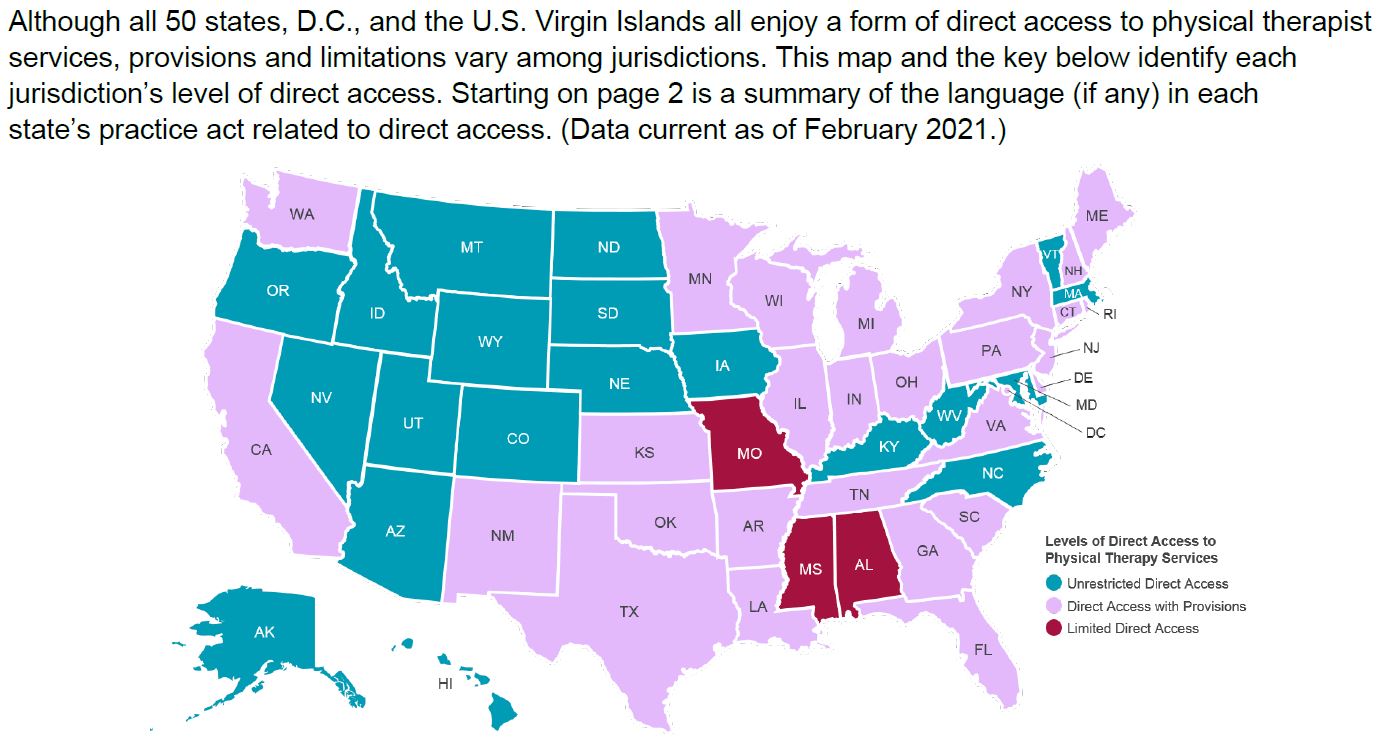As a women’s health physical therapist, I’ve been asked some questions over and over. And the two most common questions are “What exactly do women’s health physical therapists treat?” and “I’ve never heard of a physical therapist specializing in women’s health. Is it something different?”
In this series, I’ll take the time to answer these questions, to educate about physical therapy, and about physical therapy specializing in women’s health.
Question 1: “What kind of treatment do physical therapists provide?”
The question of what is physical therapy is what we should definitely go over before we get in to physical therapy with specialty on women’s health.
Rather than defining it in my own thoughts, a statement published by the American Physical Therapy Association (APTA) will give you a better idea of what are the officially defined areas of physical therapy. According to APTA’s definition…
““Physical therapy is a dynamic profession with an established theoretical and scientific base and widespread clinical applications in the restoration, maintenance, and promotion of optimal physical function. Physical therapy is provided for individuals of all ages who have or may develop impairments, activity limitations, and participation restrictions related to (1) conditions of the musculoskeletal, neuromuscular, cardiovascular, pulmonary, and/or integumentary systems or (2) the negative effects attributable to unique personal and environmental factors as they relate to human performance.”
Physical Therapists also teach their patients/clients how to prevent or manage various illnesses. The current period for physical therapy treatment is usually limited by insurance carriers. For the course of treatment for Women’s Health Physical Therapy, patients often receive treatment twice a week for 2 to 3 months. Interviews with patients, tests and screening will identify physical dysfunctions or imbalances, and depending on the outcome and goals the patient wants to achieve, patients will be provided with the most appropriate and effective care plan.
When they say you’re “Receiving” physical therapy, it does not mean that you are being treated passively? During the period of physical therapy, you learn disease management, exercise, pain relief techniques, etc., through the guidance of a physical therapist. Physical therapists not only provide the patient short-term effects, but also long-term (even when you’re not receiving physical therapy) to help the patients manage their symptoms. They also help you prevent disease in advance and pursue a healthier and more active lifestyle through wellness programs/prevention programs.
Now that we have the more general picture of physical therapy covered, let’s take a deeper look at one of the areas of physical therapy, women’s health physical therapy.
Question 2: What does ‘Women’s Health’ mean?
Women’s health, as the World Health Organization (WHO) defines, means physical, mental, and social well-being of women. It’s important to note that the phrase “women’s health” doesn’t just mean physical health, but it also includes aspects of psychological and social health.
The physical changes that women experience in life are very different from the physical changes that men experience. Due to these differences in physical changes, there are a variety of issues that only women go through, conditions that women are more prone to contract or suffer from because they are born as a woman. An example of these are…
- gynecological issues
- eating disorders
- osteoporosis
- breast cancer
- lymphedema
- lung cancer
- chronic pain syndrome
- heart disease
Question 3: “What is Women’s Health Physical Therapy?”
The focus of “Women’s Health Physical Therapy” is to clearly identify and treat the physical functions and problems of women that is different than men with regard to the previously mentioned characteristics of women’s health. It considers the fact that the physical dysfunction is not the only problem that determines the wellbeing and health of a woman but that psychosocial factors also affect the health of women.
Furthermore, it understands that these factors are the medium that affect the recovery from the root cause of the disease that needed physical therapy treatment, and with this understanding we will find the overall direction of care. For example, due to psychological instability, chronic pelvic pain may not be easily treated. In such cases, physical therapy is provided side by side with breathing technique, relaxation technique, imagery technique and various treatment approaches. Physical therapists also may work as a connection that helps you to consult professionally with a psychologist.
Question 4: “What diseases do women’s health physical therapists usually treat?”
Perhaps the biggest physical change in a woman’s life is due to her pregnancy and childbirth. As women go through pregnancy and childbirth, women experience a variety of physical changes, including problems with the musculoskeletal system before and after childbirth. In addition, as women go through many changes during menopause and the aging process, it is important to treat the negative changes and be prepared for future changes. That’s why women need professional help in understanding the various physical changes that women experience in their lifetime.
The definition by the IOPTWH (International Organization of Physical Therapists in Women’s Health) states that diseases requiring women’s health care can be grouped into three groups.
- Child bearing year conditions
- Gynecological, urological and gastroenterological conditions
- Others
Physical Therapy for childbearing year conditions
During pregnancy, pregnant women support the weight of the baby and the effect of hormones in preparation for birth relaxes the tendons and the ligaments. This makes it easy to have an imbalance in the musculoskeletal system. During this period, women’s health physical therapists…
- Help pregnant women have the correct body mechanics, postures and balance. Teach safe exercise and help prevent bone disease through various education.
- Treat musculoskeletal disorders that occur during or after pregnancy. Types of musculoskeletal disorders during this period include Sacroiliac joint dysfunction, pubic symphysis separation and low back pain
- Support postpartum care, which may cause less flexibility and pain in the surrounding skin tissue after cesarean sections, and there may be muscle imbalance due to pregnancy and cesarean sections. In this case, physical therapists help postnatal rehabilitation through various treatments.
- The most common diseases of lower pelvic muscle after childbirth are incontinence, problem of organ prolapse, and dyspareunia (pain during sexual intercourse). Women’s health physical therapy can improve the function of the pelvic muscles and reduces pain of the patients.
- Prior to childbirth, you can learn about the relaxation technique, breathing techniques, massage, and posture that you can apply during childbirth.
- Different methods may be used depending on each patient. Our community has people of various races and cultures, so they provide guidance whether you’re having difficulty of preparing for childbirth due to cultural differences, physical disability, teen pregnancy, being pregnant at an old age, pregnant female athletes, as accordingly.
Physical therapy for gynecological, urological and gastroenterological conditions
- Provide rehabilitation of pelvic floor muscle, urinary incontinence, fecal incontinence, dyspareunia, hypofunction of lower pelvic musculature, and abnormal bowel movement (including constipation experienced by children and men).
- Treatment for bladder or urethra pain and dysfunction is provided.
- Provide relief from symptoms including Interstitial cystitis, a condition that causes chronic pelvic pain, hypersensitivity colon syndrome, constipation, endometriosis, premenstrual syndrome, dyspareunia, vulval pain, and symptoms of disorders from sex life through treatment provided accordingly
- Assists in postoperative rehabilitation of the female reproductive system or abdomen.
Women’s health physical therapy for diseases not included in the above two categories are…
- Using the lymphoma therapy helps reduce lymphoma and gives guides on how to take care of the symptom.
- Physical therapy for management is provided to prevent osteoporosis and osteomalacia which are related to bone health.
- Help rehabilitation after breast cancer surgery. Treatment for musculoskeletal abnormalities and treatment for reducing lymphoma through lymphoma therapy.
- Treatment provided for fibrous muscle pain or chronic pain syndrome.
- For those who suffer from eating disorders, correct information about eating disorders and safe exercise prescription is provided. Collaboration with dietitian and other healthcare providers is also common.
- To prepare and manage physical changes during menopause, we present health management methods, provide correct information according to the needs of women, and teach them how to mitigate/manage symptoms that may occur during menopause.
Besides the above mentioned treatments, women’s health physical therapists host presentations and events in public institutions such as community centers and hospitals to do educate the community related to these and other women’s health issues. They also provide information and knowledge to nurses, doctors and psychologists.
ALSO SEE : Menstrual Cramps: Causes and Management
by Hyunhye Lee, PT, DPT
References
- http://www.apta.org/PTCareers/RoleofaPT/
- http://www.abpts.org/Certification/WomensHealth/ Guide to physical therapist practice, second edition. Phys Ther. 2001;81(1):9‐746.
- IFOMT Education Standards. http://www.ifompt.com/site/ifompt/files/pdf/IFOMT_Education_Standards_and_International_Monitori ng_20080611.pdf
- International Organization of Physical Therapists in Women’s Health. http://www.ioptwh.org/pdfs/IOPTWHscopeofpractice.pdf
- Section on Women’s Health of the American Physical Therapy Association. http://www.womenshealthapta.org/



